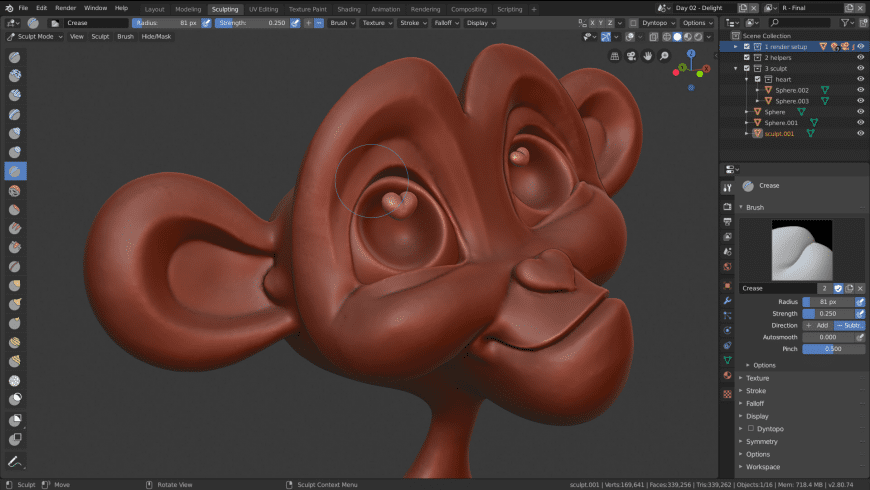Blender For Mac
Blender is the Free and Open Source 3D creation suite. It supports the entirety of the 3D pipeline—modeling, sculpting, rigging, 3D and 2D animation, simulation, rendering, compositing, motion tracking and video editing. Support Blender development on https://fund.blender.org. Blender is the most used freeware for 3D artists, many beginners who are short of budget would start from Blender, or you can use Maya/3ds Max if you are students eligible for educational free version.
Il programma mette a disposizione moltissime opzioni relative alla modellazione in 3D: animazione, rendering, post-produzione, creazione interattiva e playback.
Inoltre possiede un lettore integrato che vi permetterà di visualizzare in anteprima le vostre creazioni - sia prima che dopo averle salvate.
Blender è totalmente gratuito. Si tratta di un software open source disponibile per tutti i maggiori sistemi operativi sotto la licenza pubblica GNU.
Supporta JPG, Iris, TGA, SGI, IFF e Inventor.
Building Blender for macOS needs a bit of preparation. However the steps are not very complicated and if you follow the instructions carefully you should be able to build Blender.
macOS version 10.13 High Sierra and newer are supported.
Quick Setup
Install Xcode Development Tools
Download the latest version of Xcode from the Mac App Store for your system (it's free).
Install CMake and Subversion
CMake and Subversion must be installed and available to be used by Blender.
There are multiples ways to install them. We recommend using Homebrew. Follow the install instructions on the Homebrew website, then run in the terminal:
Other package managers like MacPorts and Fink work as well. You may also install CMake and Subversion manually. This is more advanced and requires ensuring cmake and svn commands are in the PATH.
Download Sources and Libraries
Now you are ready to get the latest Blender source code from Blender.org's Git repository. Copy and paste the following instructions into a terminal window. These will create a blender-git folder off your home directory and download the latest source code, as well as addons and external libraries.
For additional information on using Git with Blender's sources, see: Tools/Git

Building
The easiest and fastest solution is to build Blender with the default settings, and simply run this in the Terminal:
After the build finished, you will find Blender.app ready to run in ~/blender-git/build_darwin/bin.
Updating
If you later want to update to and build the latest version, run:
If building fails, it sometimes helps to remove the ~/blender-git/build_darwin folder to get a completely clean build.
Build as an Xcode project
Before starting with this section ensure you have completed the first three steps from the Quick Setup section: installing XCode, installing CMake, and downloading the external libraries.
If you like to work with the Xcode IDE and build Blender from within it, you need to generate an Xcode project.
Generating the Project
This assumes that you have added CMake to your path as described in the Quick Setup. Then execute the following instructions in a terminal:
This will generate the CMake cache files and an Xcode project file in ~/blender-git/build_xcode.
Building Blender in Xcode
Go to the folder with the generated the project file, and double click Blender.xcodeproj to open it in Xcode.
Then follow these steps to setup your project:

1. Choose Automatically Create Schemes if you are being asked after opening the project file.
2. Change the Active Scheme popup in the upper left corner of the XCode project window to install.
3. Select menu Product->Scheme->Edit Scheme
- Edit Scheme is located all the way at the bottom of the list of targets. Or just Press Command-<.
4. Select the Run item from the left view and you will see something like this:
5. Select the Blender App from the Executable popup menu.
6. Click Close to save changes.
Now clicking the Run triangle next to the Active Scheme popup should build the application and launch Blender in the debugger.
Blender For Mac Os X
Build with CUDA
Blender For Mac 10.10.5
See here for the instructions on building with CUDA support.
